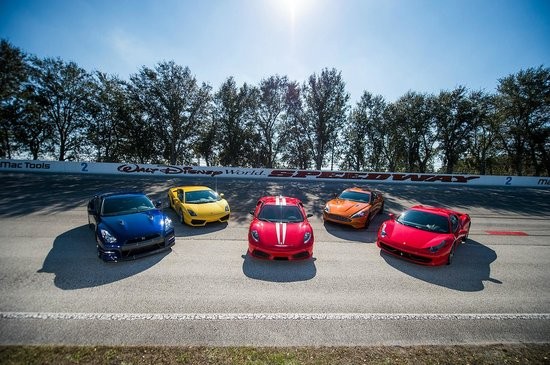
It used to be so simple didn’t it? If you wanted a luxury long wheel base saloon you bought an S Class Mercedes. Something more sporty? Perhaps a BMW 3 series coupe or a Porsche 911. Or, for something to take off the beaten track, the combat ready Land Rover Defender was an obvious choice for those keen to engage the four-wheel drive lever.
Fast-forward two decades and it’s easy to see that consumers are spoilt for choice. Somewhere in the mid 1980s the custodians of luxurious German brands realized the ‘brand footprint’ of their respective German marques could be expanded in a manner that was palatable to brand loyalists yet appealing to those not buying into the franchise.
Today, companies such as VW and Peugeot are going out of their way to tell you they have something for everybody. Yes, the Beetle may have made the Volkswagen name famous, but the carmaker is doing flips and twists to ensure its consumers also know it can put them in a 4WD vehicle capable of crossing the Sahara, or a pick-up truck that will have just as much street cred as the tough and hardy Ford F-100. Or if you have a hankering to be comfortably ensconced in wall-to-wall leather, with leg-room to boot, a ride in the lavish back seat of VW’s flagship Phaeton sedan may be what you’re looking for.
Why the change? For all the savvy styling, ongoing innovation and glamorous launch parties, the automobile industry is every bit as grueling as the Le Mans 24 Hour Endurance Race. Shareholders of the major car companies want an ever-changing array of models capable of generating ongoing cashflows and yielding healthy profit margins. The dealership networks need new models guaranteed to please those consumers that have become increasingly promiscuous in their relationships with vehicle brands.
For most multi-nationals, volume growth can only be achieved through two methods: Geographic expansion or product expansion. Whilst there are still some avenues for geographic expansion for the luxury marques in the BRIICs (Brazil, Russia, India, Indonesia China) of this world, getting volume growth in mature markets is challenging. So, extending one’s brand footprint to cater to consumers buying in a repertoire makes a whole lot of sense. But, at what point does proliferation start to dilute the brand?
Mercedes learnt a tough lesson about temporarily damaging a well-established marque when it launched its ‘entry level’ level Merc back in the mid nineties. The Mercedes A Class was a hit with younger consumers and attracted new drivers to the brand. Everything was running smoothly until an independent motoring journalist put the compact new model through its paces on a slalom course and rolled it. Thankfully no one was hurt. Except for the brand.
From a marketing perspective, nearly all car manufacturers face the same challenge with regards to brand structure. Pursue a multi-brand strategy or adopt a monolithic philosophy. One approach is not necessarily better than the other, but there are pitfalls that marketers need to be cognisant of.
In the reference to the A Class example, Mercedes used its monolithic brand to stretch down to those buyers not previously able to afford its larger cars. The strategy has undoubtedly worked with many more consumers, today, experiencing the Mercedes difference in a small car package. But, the brand has hit a few potholes along the way. As discussed, an A Class toppling over as a result of trying to maneuver around an orange safety cone is not the type of PR one normally seeks at the launch of a new model. Mercedes was also forced to create a new brand in the form of the Maybach when the company realized its flagship S Class model could not stretch up to compete with the likes of a revived and rather decadent Rolls Royce Phantom. No doubt the presence of the entry level A Class was too much for some Mercedes aficionados to bear resulting in a decision by the company to abandon the monolithic branding strategy in favour of a luxury niche brand attainable to a select few.
If a rule can be applied to the principles of brand stretch within a vehicle range it is simply this. It is easier to be a generalist and stretch to providing specialist models than it is to go the other way. Toyota built its reputation on the Corolla range launched in 1966. 46 years on it is still the most popular car in the world having sold approximately 39 million Toyota Corollas across the globe (Sedans, wagons and hatches). The Corolla spawned a number of other nimble, four cylinder Toyotas (Camry, Yaris, Celica and Crown) resulting in Toyota becoming the biggest selling Japanese car brand in the world. This generalist approach by Toyota also enabled the car brand to develop a reputation originally grounded in its fuel-efficient and reliable four-cylinder engines. Think light commercial vehicles: Hilux and Hi-ace and the more serious Land Cruiser Four Wheel Drive range.
Porsche provides an interesting contrast with Toyota. Talk to any die-hard Porsche enthusiast and they will tell you there is only one real Porsche. The 911. Yet, despite this widely held perception, Porsche has continued to push the parameters of the brand in order to bring new users to the marque. Some of these attempts appear to have worked. For instance, many questioned whether a SUV Porsche could hold its own against its more established rivals. Interestingly, sales of the Porsche Cayenne, today, continue to trend up. Regrettably, other attempts have not helped Porsche’s overall reputation. The Porsche 924 was supposed to be launched under the guise of Volkswagen until someone in the Porsche marketing team thought the 924 might make for a good entry-level model. The 924 ceased production in 1985 with no model being produced in its place.
So, how does all of this play out for the many different car brands around the world looking to new model variants as a panacea to sluggish sales? Be clear on what makes a brand famous and how the components of such fame allow the brand footprint to be extended. Audi proved to the world in 2006 it could not only provide sensible, German automobiles built like a Swiss bank vault but could also excite the senses with its powerful, Le Mans-bred, R8. Maserati surprised many in the industry in 2004 by persisting with its four door Quattroporte. As to how a Lamborghini SUV will be received next year or how long Mini will persist with its aesthetically challenged ‘Countryman? Only history will be the judge of that.
This article was first published in Ad News in December 2012




